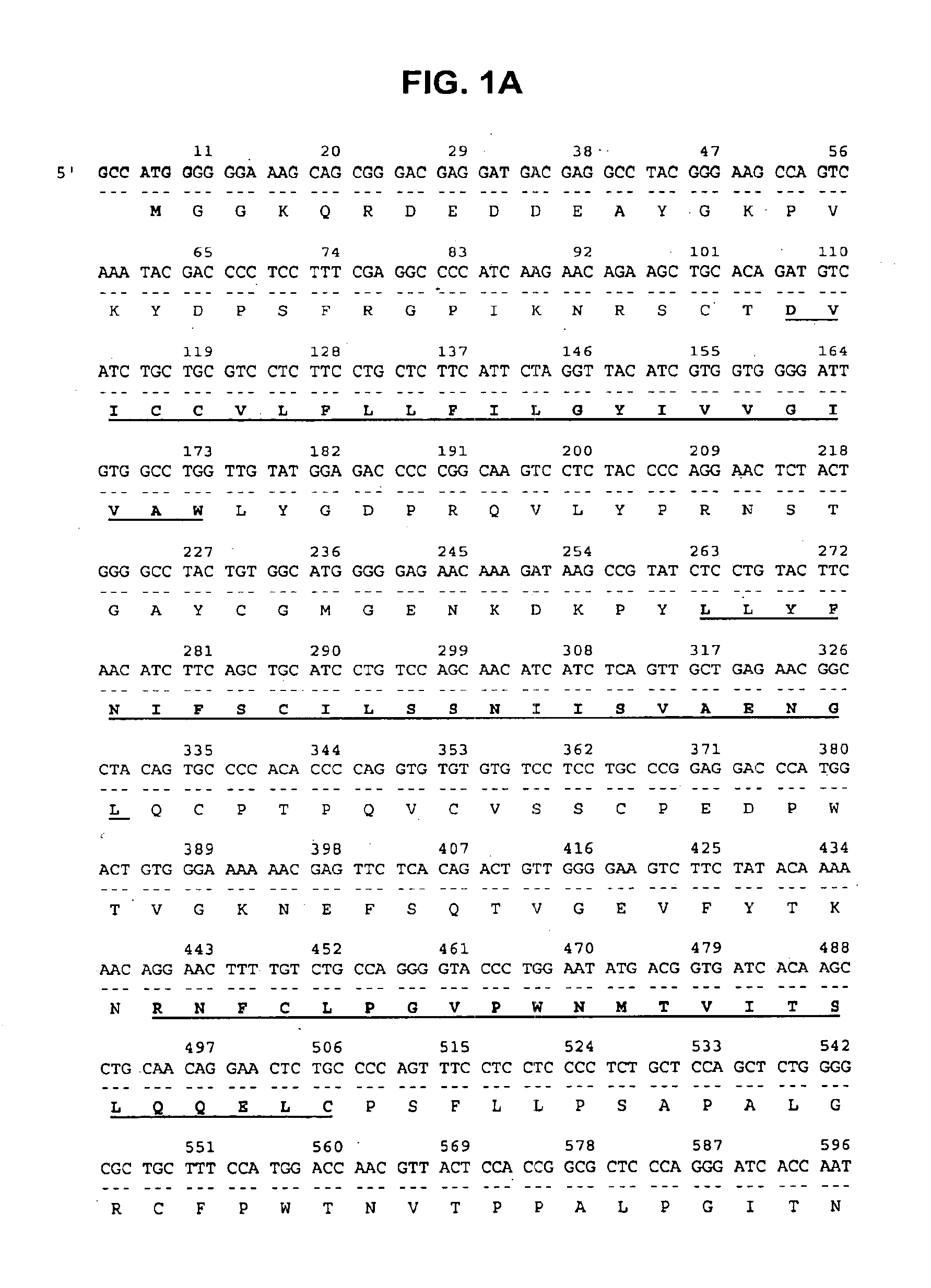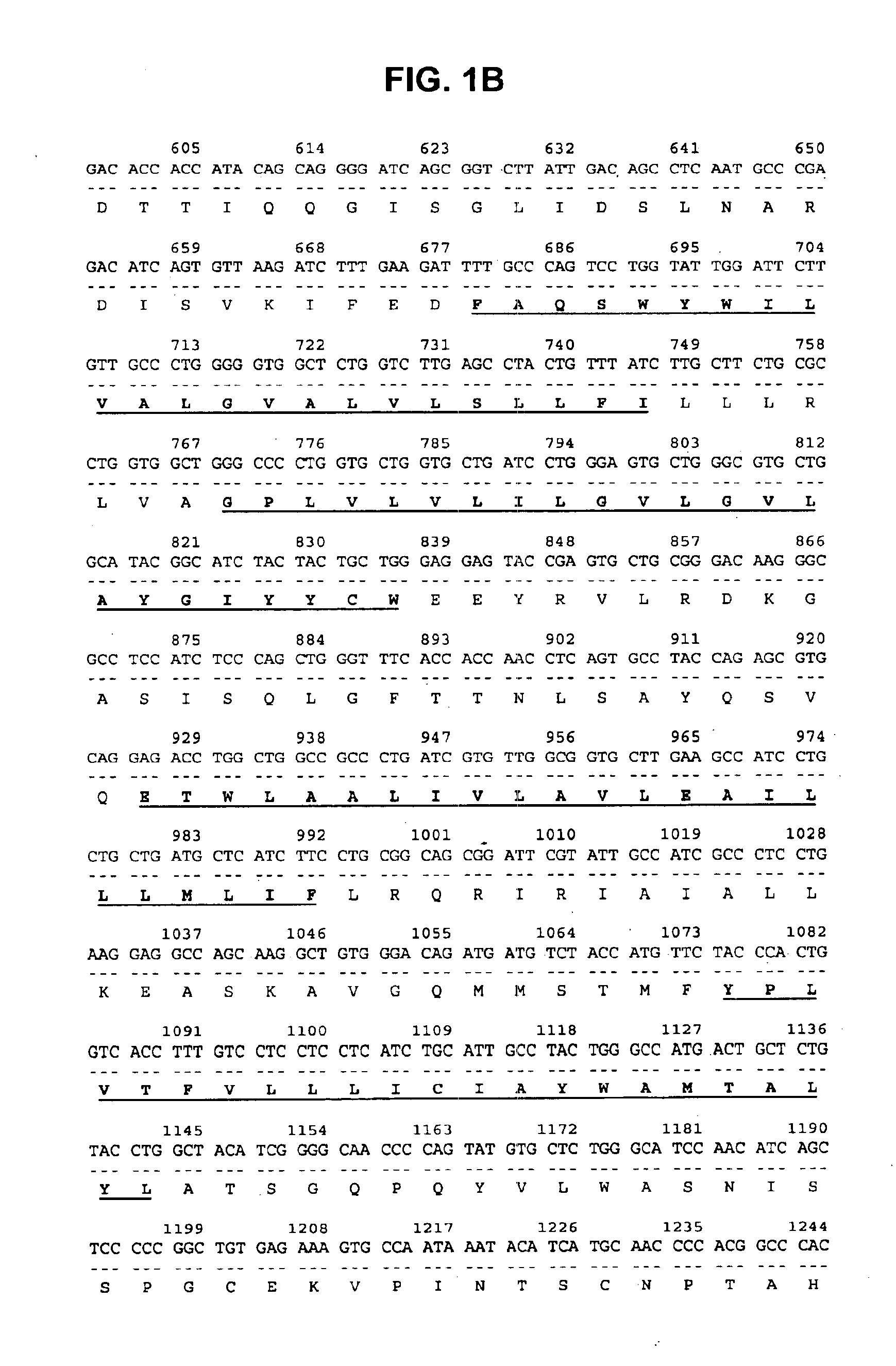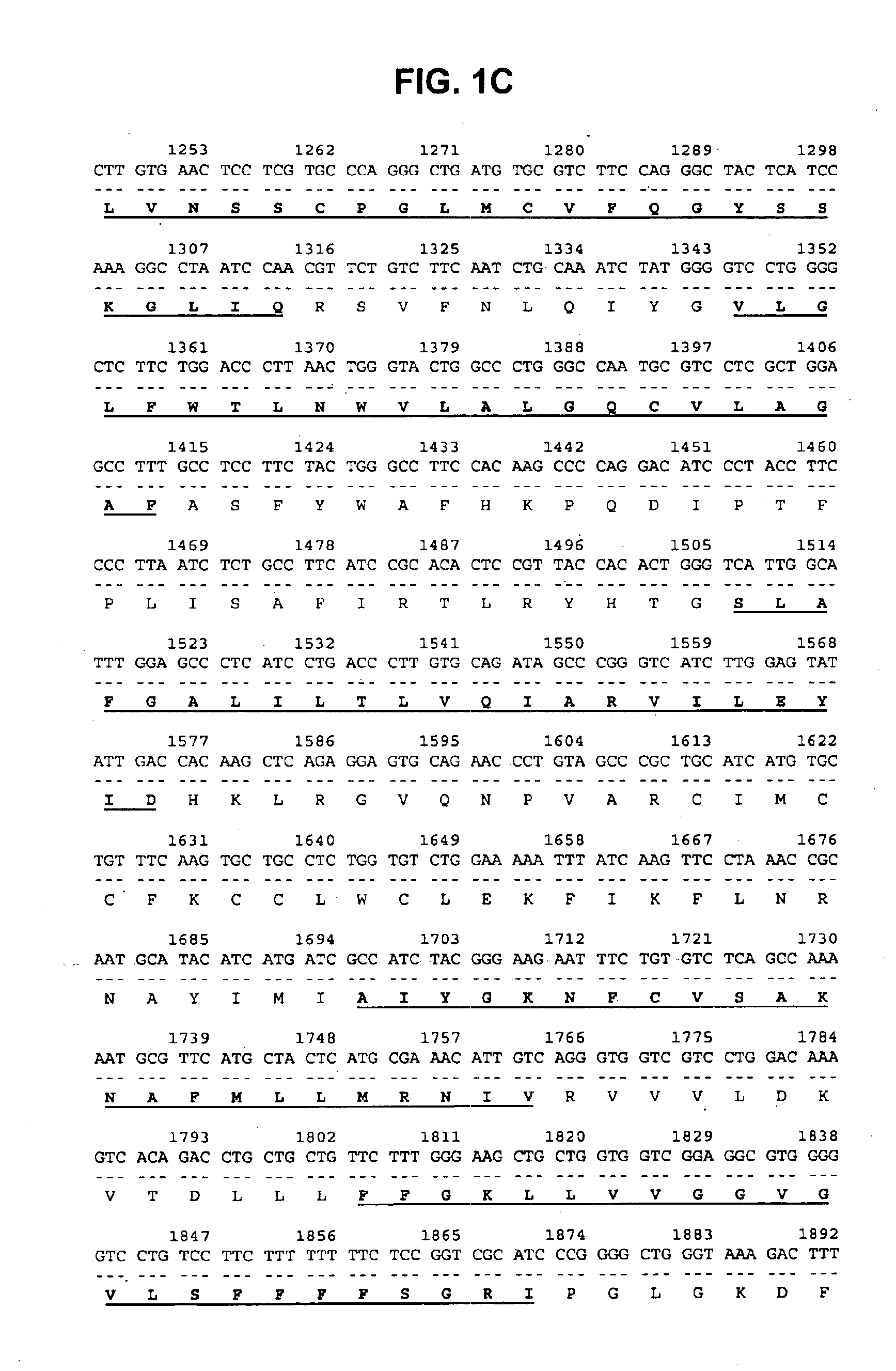Transmembrane protein expressed in prostate cancer
a transmembrane protein and prostate cancer technology, applied in the field of 24p4c12, can solve the problems of ineffective treatment for many prostate cancers, undesirable consequences, and still no effective treatment for metastatic prostate cancer, and achieve the effect of less toxic to normal cells and high expression levels
- Summary
- Abstract
- Description
- Claims
- Application Information
AI Technical Summary
Benefits of technology
Problems solved by technology
Method used
Image
Examples
example 1
SSH-Generated Isolation of cDNA Fragment of the 24P4C12 Gene
Materials And Methods
LAPC Xenografts
[0182]LAPC xenografts were obtained from Dr. Charles Sawyers (UCLA) and generated as described (Rein et al, 1997, Nature Med. 3:402-408; Craft et al., 1999, Cancer Res. 59:5030-5036). Androgen dependent and independent LAPC-4 xenografts (LAPC-4 AD and AI, respectively) were grown in intact male SCID mice or in castrated males, respectively, and were passaged as small tissue chunks in recipient males. LAPC-4 μl xenografts were derived from LAPC4 AD tumors. To generate the AI xenografts, male mice bearing LAPC AD tumors were castrated and maintained for 2-3 months. After the LAPC tumors re-grew, the tumors were harvested and passaged in castrated males or in female SCID mice.
Cell Lines
[0183]Human cell lines (e.g., HeLa) were obtained from the ATCC and were maintained in DMEM with 5% fetal calf serum.
RNA Isolation
[0184]Tumor tissue and cell lines were homogenized in Trizol reagent (Life Tech...
example 2
Cloning of Full Length 24P4C12 cDNAs
[0214]Full length cDNAs encoding the 24P4C 12 gene were isolated from a normal prostate library and sequenced. Two of the isolated clones, designated 24P4C12-GTE9 (containing most of the coding region of the 24P4C12 gene) and 24P4C12-GTE5 (containing the entire coding region of the 24P4C12 gene), were deposited as plasmids p24P4C12-GTE9 and p24P4C12-GTE5 with the American Type Culture Collection (ATCC) 10801 University Boulevard, Manassas, Va. 20110-2209 according to the terms of the Budapest Treaty. These deposits were made on Feb. 2 and 26, 1999, respectively, and have been accorded ATCC Designation Numbers 207084 and 207129, respectively. All restrictions on access to these deposits will be irrevocably removed prior to issuance of a patent on the present application or counterpart thereof. These two clones, as well as another clone encoding most of the 24P4C12 coding region, 24P4C12-GTE4, had overlapping nucleotide sequences which were combined...
example 3
24P4C12 Gene Expression Analysis
[0217]24P4C12 mRNA expression in normal human tissues was analyzed by northern blotting of multiple tissue blots (Clontech; Palo Alto, Calif.), comprising a total of 16 different normal human tissues, using labeled 24P4C12 SSH fragment (Example 1) as a probe. RNA samples were quantitatively normalized with a β-actin probe. Northern blot analysis showed expression primarily in prostate and colon, with lower expression detected in kidney, and significantly lower expression detected in pancreas, lung and placenta.
[0218]To analyze 24P4C12 expression in cancer tissues, northern blotting was performed on RNA derived from the LAPC xenografts, and several prostate and non-prostate cancer cell lines. The results show high expression levels of 24P4C12 in LAPC-4 AD, LAPC-4 AI, LAPC-9 AD, LNCAP and LAPC-4 cell line (FIG. 3, FIG. 5). Very high levels are detected in LAPC-3 AI (FIG. 5). Lower levels are detected in LAPC-9 AI. More detailed analysis of the xenograft...
PUM
| Property | Measurement | Unit |
|---|---|---|
| temperature | aaaaa | aaaaa |
| pH | aaaaa | aaaaa |
| pH | aaaaa | aaaaa |
Abstract
Description
Claims
Application Information
 Login to View More
Login to View More - R&D
- Intellectual Property
- Life Sciences
- Materials
- Tech Scout
- Unparalleled Data Quality
- Higher Quality Content
- 60% Fewer Hallucinations
Browse by: Latest US Patents, China's latest patents, Technical Efficacy Thesaurus, Application Domain, Technology Topic, Popular Technical Reports.
© 2025 PatSnap. All rights reserved.Legal|Privacy policy|Modern Slavery Act Transparency Statement|Sitemap|About US| Contact US: help@patsnap.com



